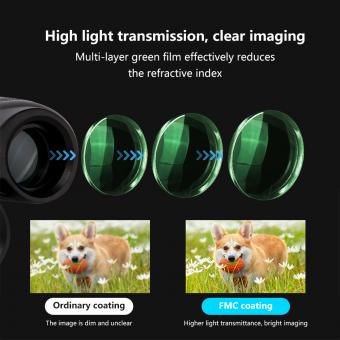What Do You Use Microscope For ?
A microscope is a scientific instrument used to magnify and observe small objects or organisms that are not visible to the naked eye. It is commonly used in various fields such as biology, medicine, chemistry, and materials science. Microscopes allow scientists to study the structure, composition, and behavior of microscopic entities, including cells, bacteria, viruses, and tiny particles. They enable detailed examination and analysis of samples, helping to uncover important information about their characteristics, interactions, and functions. Microscopes come in different types, including light microscopes, electron microscopes, and scanning probe microscopes, each with its own specific applications and capabilities. Overall, microscopes play a crucial role in advancing scientific knowledge and understanding of the microscopic world.
1、 Observation of microscopic organisms and cells.
Microscopes are essential tools used in various scientific fields for the observation and study of microscopic organisms and cells. They enable scientists to explore the intricate details of the microscopic world, revealing a wealth of information that is otherwise invisible to the naked eye.
One of the primary uses of microscopes is in the field of biology. Microscopes allow scientists to observe and study the structure, function, and behavior of microscopic organisms such as bacteria, fungi, and protozoa. By magnifying these organisms, scientists can gain insights into their morphology, cellular processes, and interactions with their environment. This knowledge is crucial for understanding the fundamental principles of life and for advancing fields such as medicine, genetics, and ecology.
Microscopes are also used in medical research and diagnostics. They enable the examination of cells and tissues, aiding in the identification and diagnosis of diseases. Microscopic analysis of blood samples, for example, can reveal abnormalities in red and white blood cells, providing valuable information for diagnosing conditions such as anemia or infections.
In recent years, advancements in microscopy techniques have expanded the capabilities of microscopes. For instance, the development of fluorescence microscopy allows scientists to visualize specific molecules or structures within cells by tagging them with fluorescent markers. This technique has revolutionized the study of cellular processes, such as protein interactions and gene expression, providing a deeper understanding of complex biological systems.
Moreover, electron microscopy has enabled scientists to observe structures at an even higher resolution, revealing intricate details of cells and tissues. This technique has been instrumental in fields such as nanotechnology, materials science, and neuroscience, where the study of ultrafine structures is crucial.
In conclusion, microscopes are indispensable tools for the observation of microscopic organisms and cells. They have played a pivotal role in advancing our understanding of the natural world and have contributed to numerous scientific discoveries. With ongoing advancements in microscopy techniques, we can expect even more exciting insights into the microscopic realm in the future.

2、 Examination of small structures and details in various materials.
What do you use a microscope for? A microscope is a powerful tool used for the examination of small structures and details in various materials. It allows scientists, researchers, and professionals in various fields to observe and analyze objects that are not visible to the naked eye. Microscopes have been instrumental in advancing our understanding of the world around us, from the study of cells and microorganisms to the analysis of materials at the atomic level.
In the field of biology, microscopes are used to study cells, tissues, and organisms. They enable scientists to observe the intricate structures and processes that occur within living organisms, providing insights into their functions and behaviors. Microscopes have also been crucial in the field of medicine, aiding in the diagnosis and treatment of diseases by allowing doctors to examine cells and tissues for abnormalities.
In materials science, microscopes are used to analyze the composition and structure of materials at the microscopic and nanoscopic levels. This information is vital for the development of new materials with enhanced properties and for understanding the behavior of existing materials under different conditions. Microscopes are also used in forensic science to examine trace evidence such as fibers, hairs, and fingerprints, helping to solve crimes and provide evidence in court.
The latest advancements in microscopy technology have further expanded its capabilities. For example, scanning electron microscopes (SEMs) can provide high-resolution images of the surface of materials, allowing for detailed analysis of their topography and composition. Transmission electron microscopes (TEMs) can even image individual atoms, enabling scientists to study the atomic structure of materials and investigate phenomena at the nanoscale.
In conclusion, microscopes are indispensable tools for examining small structures and details in various materials. They have revolutionized our understanding of the natural world and continue to play a crucial role in scientific research and technological advancements. The latest advancements in microscopy technology have further enhanced their capabilities, opening up new possibilities for exploration and discovery.

3、 Analysis of biological samples for research and medical purposes.
Microscopes are essential tools used in various scientific fields, particularly in the analysis of biological samples for research and medical purposes. These powerful instruments allow scientists and medical professionals to observe and study microscopic structures and organisms that are otherwise invisible to the naked eye.
In research, microscopes are used to investigate the intricate details of cells, tissues, and organisms. They enable scientists to examine the morphology, structure, and behavior of cells, as well as the interactions between different cellular components. By studying these microscopic structures, researchers can gain insights into the fundamental processes of life, such as cell division, differentiation, and the functioning of organs and systems.
Microscopes also play a crucial role in medical diagnostics. They are used to analyze biological samples, such as blood, urine, and tissue specimens, to identify and diagnose diseases. Microscopic examination allows medical professionals to detect abnormalities, such as cancer cells, bacteria, parasites, or other pathogens, which helps in determining the appropriate treatment plan.
Moreover, advancements in microscopy techniques have revolutionized the field of biomedical research. Techniques like fluorescence microscopy, confocal microscopy, and electron microscopy have provided researchers with the ability to visualize and study specific molecules, cellular processes, and even the three-dimensional structure of biological samples. These techniques have contributed to significant breakthroughs in understanding diseases, developing new drugs, and designing targeted therapies.
In recent years, there has been a growing interest in the development of advanced microscopy techniques, such as super-resolution microscopy and single-molecule imaging. These techniques allow scientists to observe and analyze biological samples at an unprecedented level of detail, providing new insights into cellular processes and molecular interactions.
In conclusion, microscopes are indispensable tools for the analysis of biological samples in research and medical fields. They enable scientists and medical professionals to explore the intricate world of cells and organisms, leading to a better understanding of life processes and improved diagnostics and treatments for various diseases.

4、 Identification and classification of microorganisms and pathogens.
Microscopes are essential tools used in various scientific fields, particularly in microbiology, for the identification and classification of microorganisms and pathogens. Microorganisms are microscopic organisms such as bacteria, viruses, fungi, and protozoa that are not visible to the naked eye. Pathogens, on the other hand, are microorganisms that cause diseases in humans, animals, and plants.
Microscopes enable scientists to observe and study these microorganisms in detail, allowing for their identification and classification. By magnifying the specimens, microscopes reveal the intricate structures and characteristics of microorganisms, aiding in their classification and understanding of their behavior.
Identification of microorganisms is crucial for several reasons. Firstly, it helps in diagnosing and treating infectious diseases. By identifying the specific microorganism causing an infection, healthcare professionals can prescribe appropriate antibiotics or antiviral medications. Additionally, identification allows for the tracking and monitoring of disease outbreaks, enabling the implementation of effective control measures.
Furthermore, microscopes play a vital role in research and development of new drugs and vaccines. Scientists can study the structure and behavior of microorganisms to identify potential targets for drug development. Microscopy techniques, such as electron microscopy, have also been instrumental in visualizing the structure of viruses, aiding in the development of vaccines against viral diseases.
In recent years, advancements in microscopy techniques have further enhanced the identification and classification of microorganisms. For instance, fluorescence microscopy allows for the visualization of specific molecules within microorganisms, aiding in their identification and understanding of their functions. Additionally, techniques like confocal microscopy and super-resolution microscopy provide higher resolution and three-dimensional imaging, enabling more detailed analysis of microorganisms.
In conclusion, microscopes are indispensable tools in the identification and classification of microorganisms and pathogens. They enable scientists to study the intricate structures and characteristics of microorganisms, aiding in the diagnosis, treatment, and prevention of infectious diseases. With advancements in microscopy techniques, our understanding of microorganisms continues to expand, leading to improved healthcare and advancements in drug development.






























There are no comments for this blog.